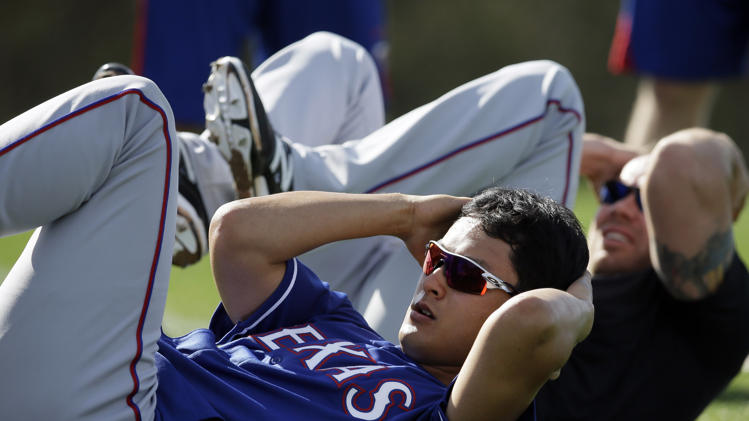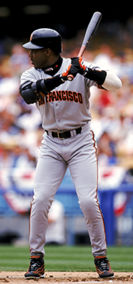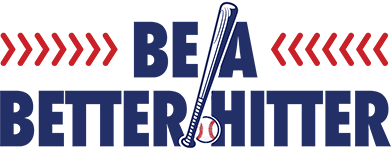Baseball Conditioning and Fitness

Your Legs | Rotator Cuff | Consuming Water | Running Program
Your Legs are Your Lifeblood
 Regardless of whether you’re a position player or a pitcher, your legs are your lifeblood. And, for successful, injury-free performance, they need both stamina and power. They need the stamina to endure 9-inning games and 162-game seasons and the explosiveness to run, hit and throw with power. Remember, all actions in baseball, not just running, start with your legs. The forces used in hitting and throwing, for example, don’t originate in the arms and hands. They originate in the legs and are then transferred through the trunk to the arms and hands where they are applied to the bat and ball. Likewise, getting out of the box, charging bunts, backing up bases, going in the hole, stealing second and getting a jump in the outfield all require explosive action by the legs.
Regardless of whether you’re a position player or a pitcher, your legs are your lifeblood. And, for successful, injury-free performance, they need both stamina and power. They need the stamina to endure 9-inning games and 162-game seasons and the explosiveness to run, hit and throw with power. Remember, all actions in baseball, not just running, start with your legs. The forces used in hitting and throwing, for example, don’t originate in the arms and hands. They originate in the legs and are then transferred through the trunk to the arms and hands where they are applied to the bat and ball. Likewise, getting out of the box, charging bunts, backing up bases, going in the hole, stealing second and getting a jump in the outfield all require explosive action by the legs.
Start by building stamina. All too often, we are consumed by the need for speed and power and fail to build or maintain a solid fitness base. Successful players spend hours per day executing explosive movements in practice and game situations. Doing multiple, all-out repetitions without a solid base increases the risk of injury to the muscles, joints, connective tissue, tendons and/or ligaments. The first goal of your leg program should be to prevent injury – the second goal should be to increase speed and power.
Start by maintaining or rebuilding your aerobic and strength base. Do aerobics 2-3 times per week for stamina and lift 2-3 times per week for strength. A solid aerobic base will help prevent injury by allowing your legs to recover quicker and more completely. A good strength base will let you perform at a higher intensity for a longer period of time.
Your training should mimic the game as closely as possible. It should use the same muscle groups, same movement patterns and same energy system(s) used in the game. Running, because it lets you condition the muscles in a manner similar to that used in game situations, is the most beneficial form of aerobic work. Use a cycle or Stairmaster when injury, fatigue, time or weather prohibit running and/or in situations where you need a change of pace. All players should run. Starting pitchers should run the most; about 20-30 minutes per day between starts. Relievers and extra men need about 10-15 minutes per day. Position players need about 8-10 minutes. Do speed work over distances of 10-60 yards 3-4 times per week.
For strength, do leg curls and functional full-range of motion exercises using body weight as resistance. Step-ups (forward and sideways), walking lunges (forward, sideways and backwards), split-squats, “cowboy” squats and squat touches develop both the primary and support muscles of the hip, groin, knee and ankle. In addition, they mimic the movement patterns used in running and develop a high degree of agility, balance and coordination. Start with one set of ten reps of each exercise. Add a set per week to a max of 3×10.
When you can do 3×10 of the leg exercises, add a day of low intensity plyometrics each week for power. Start with ankle hops. Stand with feet shoulder with apart and hop in place as you generate momentum with your ankle joints. Extend your ankles through their full range of motion on each hop. Do side to side ankle hops for lateral speed and agility. Hop laterally 2-3 feet from your ankle joints, keeping your feet at shoulder width and landing on both feet at the same time. For first-step quickness do single leg push-offs and box crossovers. Start single leg push-offs by standing behind and to the side of a 6-12 inch high box. Place your right foot on the left corner of the box. Extend your right leg and foot and explode up as high as possible. Land in the same position and repeat. Use your arms to gain additional height and balance. Repeat on the left leg. For box cross-overs, stand in a “ready” position with your feet about shoulder width apart and about two feet to the left of a 4-6 inch high box. Use a cross-over step and step on to the center of the box with your left foot. Push off with the left leg and foot and land in a “ready” position about two feet to the right of the box. Cross back over with the right leg and repeat. Start with 1×10 of each drill. Progress to 3×10. For variety, have a partner toss or roll you during these drills.
The running drills, leg exercises and low impact plyometric exercises listed above combine injury prevention and performance. They build stamina, increase strength and improve agility, balance, coordination, speed and power without pounding the body.
Exercises for the Rotator Cuff (Jobes)
Dr. Gene Coleman, the Houston Astros Strength and Conditioning Coach, authored this essay during spring training, 2000.
The rotator cuff consists of four small muscles that run from the shoulder blade (scapula) to the top of the upper arm (humerus). As a group, they stabilize the upper arm in the shoulder socket and allow it its range of motion. All throwing athletes, not just pitchers, need a strong, healthy rotator cuff. If for some reason, one or more of the rotator cuff muscles can’t help stabilize the shoulder, most major motions of the shoulder become impossible. An unstable shoulder can lead to impingement, tendinitis, bursitis, tears, joint wear and pain. If you have an unstable shoulder, you can forget throwing, swinging, lifting weights or even reaching overhead.
To maintain a healthy shoulder, do Jobe-type exercises (named for the Dodgers’ team physician, Frank Jobe, MD) for the muscles of the rotator cuff muscles 3-4 times per week year-around. Do the exercises listed below with dumbbells. Little Leaguers should use 1-3 pound weights, high school and college athletes use 3-5 pound weights. Start with one set of 10 and gradually build to one set of 20.
- Forward Raise. Stand with arms at the sides and palms facing back. Keeping your arms straight, slowly raise your hands (dumbbells) to shoulder height with palms down. Pause and return.
- Lateral Raise. Stand with your arms at the sides and palms toward the body. Keeping your arms straight and palms down, slowly raise your hands (dumbbells) to shoulder height. Pause and return.
- Reverse Fly. Flex your knees slightly and bend forward at the waist until your chest is parallel to the floor. Let your arms hang down straight down with your palms forward and thumbs pointing away from your body. Slowly raise both hands (dumbbells) out to the side until they are even with your shoulders. Pause and return.
- Internal Rotation. Lie on your back with arms down by your sides. Flex (bend) your right elbow to 90 degrees and hold your elbow against your right side. Keeping your elbow against your side, slowly lower (external rotation) your hand (dumbbell) away from your side as far as you can. Pause and bring it back across the chest.
- External Rotation. Lie on one side with your knees bent. Bend the elbow of the top arm to 90 degrees and let your forearm and hand rest across your stomach. Keeping your elbow against your side, slowly raise (external rotation) the top hand (dumbbell) until it is straight up in the air. Pause and return.
- Supraspinatus Fly (Empty Can). Stand with both arms down by your sides and hands rotated inward as far as possible with thumbs pointing down. Keep your arms straight, slowly raise your hands (dumbbells) forward and out to the sides, as if pouring water out of a can. Do not lift higher than 600.
- Upward Rotation. Flex your knees slightly and bend forward at the waist until your chest is parallel to the floor. Pull your elbows back until your upper arms are even with your back. Bend your elbows and let your hands hang straight toward the ground with palms facing each other and thumbs up. Slowly raise both hands (dumbbells) straight up (upward rotation) until they are even with your shoulders. Pause and return.
Consuming Water During Workouts – How Much and When?
Dr.Gene Coleman, the Houston Astros Strength and Conditioning Coach, authored this essay during spring training, 2000.
Water is the most essential and most neglected nutrient for sports performance. All of the body’s important chemical reactions occur in water. About 60% of your body weight and 70% of your muscle weight is water. Water is essential for muscle function, energy production, waste removal, and temperature regulation. Inadequate water intake causes dehydration, elevated temperature, fatigue, decreased performance, and increased risk of heat illness.
You need at least .5 oz water per pound of body weight each day under normal circumstances, more if you are working in the heat. A typical 200-pounder will need at least 12-15 eight-ounce glasses per day under normal conditions. Drink 2 cups before breakfast to make-up for the water that you lost during the night. Drink another 2-3 cups, the colder the better, about an hour before workouts to superhydrate the body. Drink another cup every 15-20 min throughout workouts to maintain fluid balance. Replace each pound of fluid loss with 16 oz of water immediately after workouts to restore body-fluid balance and then drink at least 1-2 cups every hour between workouts.
If you fly, you need to drink more. Recirculated air has a tendency to dehydrate. Drink at least 8 oz of water for every hour you spend on an airplane. Also avoid alcohol and caffeinated beverages when you fly because they will further dry you out and make jet lag harder to handle. If you consume alcohol in flight, drink at least 8 more oz of water for every 2 drinks (12-oz beer, 4-oz wine or 1.5 oz 80 proof) that you have. If you drink caffeinated beverages, drink at least 8 more ounces of water for every cup of coffee or can of caffeinated soft drink.
Dr. Coleman’s running program
5 to 30 Second Running Program
Dr. Gene Coleman, the Houston Astros Strength and Conditioning Coach, authored this essay during spring training, 2000.
This program has been shown to be effective for helping maintain aerobic and anaerobic fitness during a season of professional baseball. Running is done on a baseball field. Players run around the field in a clockwise direction. The coach stands behind second base. There are four steps in the program:
- Step 1: Players run for 3 minutes at a constant speed, usually between 9 and 10:00-minute mile pace
- Step 2: Upon signal from the coach, players sprint for 5 seconds at 80-85% of max speed. This is the anaerobic part of the run.
- Step 3:Without stopping, players resume aerobic running for 3 minutes. The pace is increased so that it is 10-15 sec faster than the initial 3-minute run.
- Step 4:Upon signal, players sprint for 10 seconds. Steps 1-4 are repeated with the sprint time increasing by 5 seconds and the speed of the 3-minute aerobic run increasing by 10-15 seconds until the players are sprinting for 30 seconds.
When starting the program, limit the total time to 15-16 minutes. Gradually increase time until the total run takes 30 minutes. Do the run 2 times per week in the pre-season and once per week during the season. Limit relievers and starting position players to 15-16 total minutes during the season. High school players should work until sprints reach 20 seconds in duration. College and pros can work until sprints reach 30-45 seconds.
